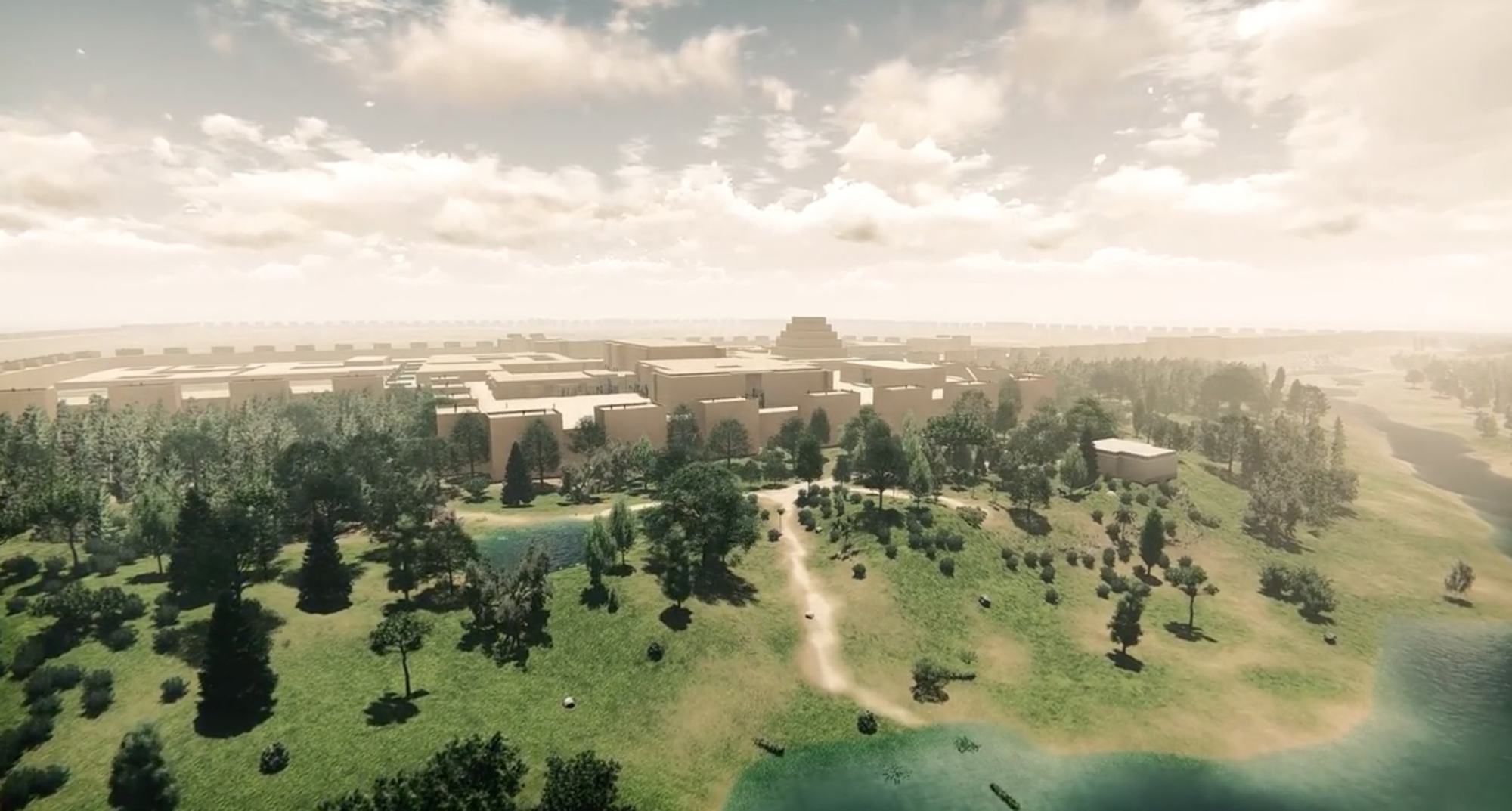
- Home
- Explore the site
- Construction
- Raw materials and manpower
Timber
According to surviving tablets, timber came from the Upper Tigris region and the Amanus mountains on the Anatolian border. Some timber was also seized from neighbouring kingdoms. The trunks were floated to Nineveh or Ashur. Huge quantities of timber were stored in Ashur before being shipped by boat to Khorsabad. The timber transport relief from Sargon's palace is perhaps a depiction of these great convoys.
Stone
The stone used to construct the city was a gypsum alabaster, "Mosul marble”, sourced from Assyria. Three mines, Habruri, Adia and Tastiate, have been identified in the surviving correspondence. The blocks were transported by sledge, raft or boat. The biggest difficulty was to transport the heavy bulls, which could only be floated down the river once a year, during the spring floods. Time was therefore of the essence.
Manpower
Most of the construction work at Khorsabad was done by slaves from subject kingdoms of the Assyrian Empire. This population lived in the city. Sargon could also count on the forced labour of Assyrians. In his inscriptions, he states that: /p>
”(…) I brought to this city people from the four corners of the world, speakers of foreign languages and different dialects, from mountain and plain, (…). To supervise and direct them, I instructed true Assyrians of great competence to teach them good conduct and the reverence owed to the deity and the king.”
(Room XIV l. 49-53; bull inscription; Cylinder of Khorsabad - translation S. Lackenbacher, 1990)




